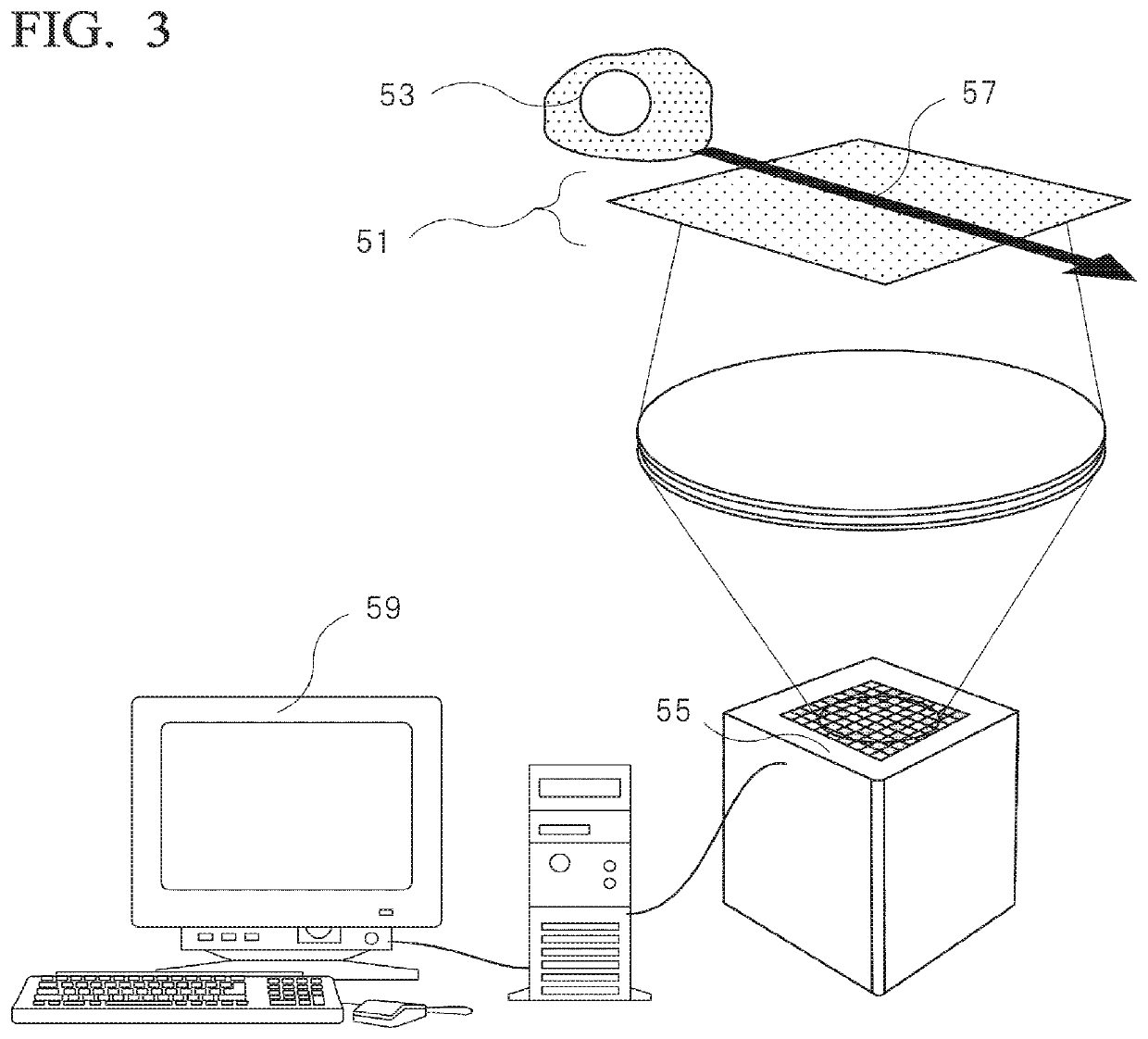Dynamic high-speed high-sensitivity imaging device and imaging method
a high-speed, imaging device technology, applied in the direction of fluorescence/phosphorescence, instruments, code conversion, etc., can solve the problems of limited imaging speed, high cost and large size of imaging devices, and limitations of imaging speed in imaging devices configured for single-pixel detection, etc., to achieve the speed limit of continuous imaging technology, increase the signal-to-noise ratio, and reduce costs.
- Summary
- Abstract
- Description
- Claims
- Application Information
AI Technical Summary
Benefits of technology
Problems solved by technology
Method used
Image
Examples
example 1
[0097]Next, the present invention will be described in detail using examples.
[0098]FIG. 16 is a schematic diagram of a device in Example 1. The device relates to a device in which the object to be observed moves, an irradiation pattern through which light is radiated to the object to be observed is obtained using a light source and a mirror, and light transmitted through the object to be observed is observed so that an image of the object to be observed is reproduced.
[0099]An M470L3-C1 / blue (a wavelength of 47 nm) Olympus BX & Collimator for 1×LED (1000 mA) manufactured by Thorlabs, Inc. was used as a light source. Note that, unlike a case in which coherent light such as a laser is used, in the case in which non-coherent light such as a light emitting diode (LED) and a lamp was used, spots were not observed. Thus, accuracy was improved. In addition, a case in which continuous light was used was more appropriate for high speed imaging than a case in which pulsed light was used.
[0100]...
example 2
[0107]Next, multicolor imaging will be described. The multicolor imaging is technology in which an object to be observed stained in multiple colors using a plurality of cell fluorescent labels is observed using a combination of a plurality of optical elements so that a color image is reconstructed. Note that the object to be observed is not limited to cells. Furthermore, light to be observed is not limited to fluorescence. A technique of dying an object to be observed is not limited to a cell fluorescent label and may use dyes or the like. The object to be observed through the multicolor imaging is not limited to a stained object to be observed and may be a colored object to be observed.
[0108]Multi-color imaging of cells of which cell nuclei, cytoplasm, cell membranes, or the like are stained in multiple colors, which has been performed in fluorescence activated cell sorting (FACS) in the related art, can be performed using a combination in which a plurality of cell fluorescent labe...
PUM
| Property | Measurement | Unit |
|---|---|---|
| fluorescence | aaaaa | aaaaa |
| fluorescence | aaaaa | aaaaa |
| fluorescence | aaaaa | aaaaa |
Abstract
Description
Claims
Application Information
 Login to View More
Login to View More - R&D
- Intellectual Property
- Life Sciences
- Materials
- Tech Scout
- Unparalleled Data Quality
- Higher Quality Content
- 60% Fewer Hallucinations
Browse by: Latest US Patents, China's latest patents, Technical Efficacy Thesaurus, Application Domain, Technology Topic, Popular Technical Reports.
© 2025 PatSnap. All rights reserved.Legal|Privacy policy|Modern Slavery Act Transparency Statement|Sitemap|About US| Contact US: help@patsnap.com



